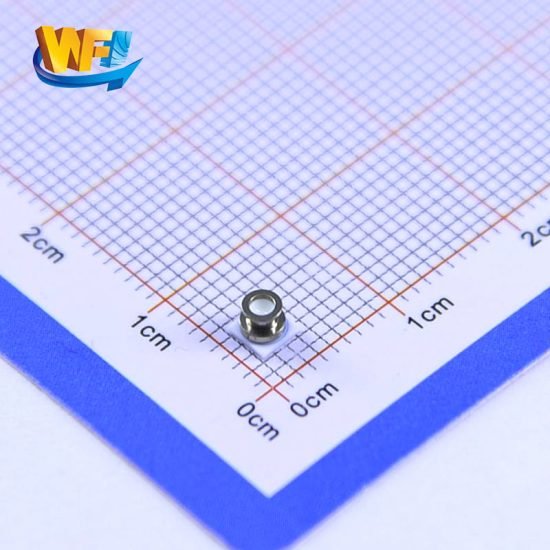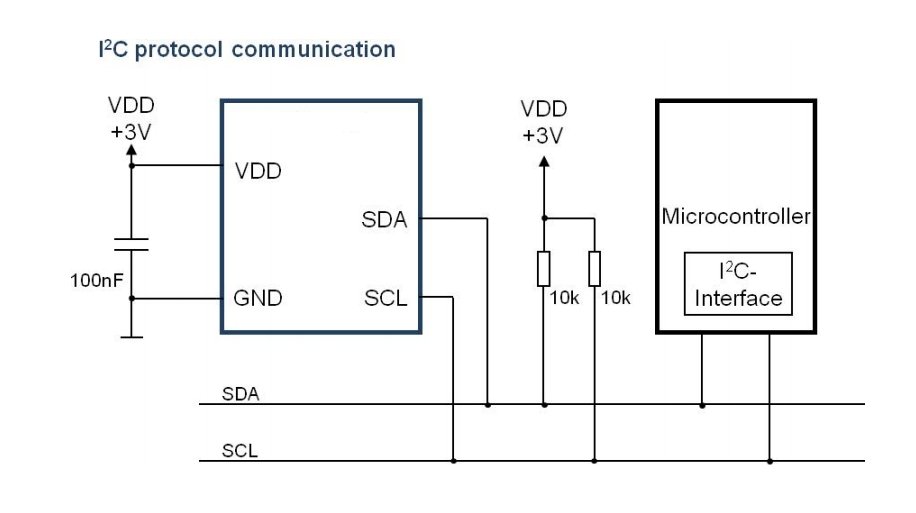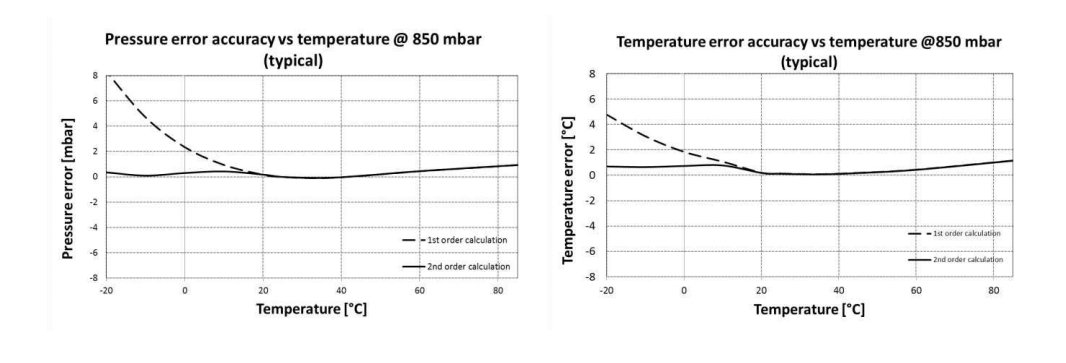In today’s rapidly evolving world, sensors play an essential role in transforming raw data into actionable insights across industries. Among these, MEMS piezoresistive pressure sensors have emerged as a critical technology with applications spanning from automotive and healthcare to consumer electronics and industrial automation. This article dives deep into the fundamentals and practical applications of these sensors, outlines their technical aspects, and explains why they matter in modern technology.
แคตตาล็อก
ทำความเข้าใจกับเซ็นเซอร์ความดัน piezoresistive
MEMS (Micro-Electrical-Mechanical Systems) technology has transformed sensor design through miniaturization and cost-effective manufacturing. Among the various sensor types, piezoresistive pressure sensors are celebrated for their ability to measure subtle pressure changes in a wide array of applications. In this section, we explore the working principles, benefits, and differences between piezoresistive sensors and their piezoelectric counterparts.
How Do Piezoresistive Sensors Work?
Piezoresistive sensors operate on the principle where the electrical resistance of a material changes when mechanical stress is applied. In MEMS sensors, a doped silicon crystal acts as the sensing element. When pressure is applied, the deformation in the silicon changes its resistance in a predictable way. This variation is then measured using configurations such as the Wheatstone bridge, a key component in ensuring precise readings.
The advantage of the piezoresistive effect lies in its consistency. Unlike some other sensor types, these sensors offer excellent repeatability, which is vital in demanding applications like medical devices or automotive systems.
What is the Piezoresistive Effect in MEMS?
The piezoresistive effect in MEMS involves the change in electrical resistance of semiconductor materials when subjected to mechanical stress. This phenomenon, which has been studied extensively, is key to understanding the sensor’s behavior under varying operational conditions. In practice, manufacturers control the doping of silicon to tune sensitivity and achieve high measurement accuracy.
Real-world examples from our field show that careful engineering of the piezoresistive elements leads to robust sensors that perform reliably even in harsh environments. Tools like advanced simulation software and precise ion implantation techniques are routinely used during development to predict sensor performance and ensure compliance with stringent standards.
How Do Piezoelectric Pressure Sensors Work?
Though our focus is on piezoresistive technology, understanding piezoelectric pressure sensors is essential due to their complementary applications. Piezoelectric sensors work on a different principle: certain materials generate an electrical charge when mechanically deformed. This charge can be measured to indicate the applied pressure. While both sensor types are valuable, piezoelectric pressure sensors often excel in applications that require very dynamic response times, such as vibration and acoustic sensing.
What Do Piezoelectric Sensors Measure?
Piezoelectric sensors have a broad measurement range. They are primarily used to measure dynamic parameters such as vibrations, forces, and impacts. The versatility of piezoelectric sensors, including types like the piezoelectric transducer sensor and piezoelectric load sensor, makes them a popular choice in fields like automotive crash detection, wearable technology, and industrial monitoring.

หากคุณสนใจที่จะทำความเข้าใจเพิ่มเติมเกี่ยวกับ [What do piezoelectric sensors measure?], exploring the integration of piezoelectric effects in both pressure and acceleration sensors is highly recommended for a comprehensive view of sensor capabilities.
ความแตกต่างระหว่างเซ็นเซอร์ piezoelectric และ piezoresistive
While both sensor types convert mechanical forces into electrical signals, they differ in key ways. Piezoresistive sensors provide continuous, highly repeatable readings and are better suited for applications where static measurements are important, such as in automotive engine monitoring or medical devices. On the other hand, piezoelectric sensors excel in dynamic environments where rapid signal changes need to be captured.
ด้านเทคนิคและกระบวนการผลิต
In this section, we delve into the intricacies of MEMS manufacturing, explain the importance of component design and calibration, and examine how temperature and stress factors are managed to maintain sensor accuracy.
MEMS การผลิตและข้อได้เปรียบในการออกแบบ
MEMS technology leverages semiconductor manufacturing techniques such as photolithography, etching, and ion implantation to produce pressure sensors on a microscopic scale. This not only drives down the cost per unit but also allows for high-volume production with consistent quality.
A prime advantage of using MEMS for sensor fabrication is the ability to integrate a large number of sensors on a single silicon wafer. This integration improves performance consistency while ensuring scalability for large industrial applications.
ไดอะแฟรมซิลิกอนและสะพานวีทสโตน
At the heart of a MEMS piezoresistive pressure sensor lies the silicon diaphragm—a thin, flexible membrane that deforms under pressure. Coupled with the Wheatstone bridge, this design converts mechanical deformation into an electrical signal that can be precisely measured.

Manufacturers carefully engineer this assembly to minimize hysteresis and offset drift. As a result, the sensors exhibit reliable performance over an extended range of pressures, making them ideal for applications such as automotive and medical devices.
Temperature Effects: TCR and TCS
Temperature fluctuations can influence the performance of pressure sensors. Two important factors here are the Temperature Coefficient of Resistance (TCR) and the Temperature Coefficient of Span (TCS). TCR helps in understanding how the electrical resistance changes with temperature, while TCS indicates how the sensor’s sensitivity is affected by temperature variations.
Accurate calibration and compensation techniques are applied during manufacturing to ensure that sensors remain reliable and precise across a broad temperature range.

สร้างความมั่นใจในความแม่นยำและความมั่นคง
The accuracy of pressure sensors is paramount, especially in critical applications. Calibration processes, often aided by integrated ASICs (Application-Specific Integrated Circuits), help in reducing total error by compensating for non-linearity, hysteresis, and other minor errors.
Manufacturers also perform rigorous testing to confirm that sensors meet international standards for accuracy and repeatability. This focus on precision ensures that sensors can reliably monitor and control processes in high-stakes industries.
ความเครียดและการพิจารณาการดริฟท์ชดเชย
External mechanical stress—whether from packaging, assembly processes, or operational loads—can cause slight changes in sensor performance over time. This phenomenon, known as offset drift, is carefully managed through robust packaging designs and stress-relief mechanisms.
Ensuring minimal stress-induced drift is crucial to maintain the long-term stability and reliability of the sensor. These measures not only extend the lifespan of the sensor but also prevent system failures in sensitive applications.
แอปพลิเคชั่นที่ใช้งานได้จริงในอุตสาหกรรม
MEMS piezoresistive pressure sensors have a wide range of applications that span many industries. In this section, we examine specific use cases, highlighting how these sensors contribute to innovation and safety in various fields.

ยานยนต์และการขนส่ง
In the automotive sector, pressure sensors are used extensively for engine management, emission control, and safety systems. For example, sensors monitor tire pressure, helping to maintain fuel efficiency and minimize the risk of accidents. In advanced driver-assistance systems (ADAS), sensors contribute to features such as collision avoidance and adaptive cruise control.
Additionally, automotive companies rely on these sensors to monitor exhaust and intake pressures. This integration helps optimize engine performance and reduce emissions—a growing priority in modern transportation.
การแพทย์และการดูแลสุขภาพ
Their accuracy ensures that dosage and pressure are maintained within safe limits, thereby safeguarding patient health.
In the medical field, the precision and reliability of MEMS piezoresistive pressure sensors are essential. They are used in critical applications such as blood pressure monitors and ventilators. During medical procedures like angioplasty, these sensors guide doctors by providing real-time feedback on pressure levels inside arteries.
อุปกรณ์อิเล็กทรอนิกส์สำหรับผู้บริโภคและอุปกรณ์สมาร์ท
Modern consumer products increasingly rely on sophisticated sensors. Devices such as smartphones, wearable fitness trackers, and even home automation systems benefit from precise pressure measurement. MEMS accelerometers and gyroscopes—closely related to our topic—are common in these gadgets and help improve user experience by enabling gesture recognition and orientation tracking.
As more consumer electronics integrate into smart home ecosystems, reliability and miniaturization of sensors become even more critical.
ระบบอัตโนมัติอุตสาหกรรมและการควบคุมกระบวนการ
Accurate pressure monitoring in these environments is not only about process optimization but also about preventing costly failures and ensuring worker safety.
Industries such as manufacturing, HVAC, and process control depend heavily on accurate pressure sensors to ensure operational stability and safety. Sensors play a vital role in monitoring and controlling everything from fluid dynamics in pipelines to maintaining precise environmental conditions in production facilities.
แอปพลิเคชั่นดำน้ำและกลางแจ้ง
The diving industry leverages pressure sensors to monitor underwater depth and ensure diver safety. Given that atmospheric pressure decreases with depth, sensors provide critical data that helps divers calculate ascent and descent rates accurately. Similar principles apply to outdoor applications, such as altimeters used in high-altitude hiking or recreational sports.
For enthusiasts and professionals alike, reliable pressure monitoring is key to both safety and performance.
ความก้าวหน้า
The rapid pace of innovation in sensor technology continues to open new applications and improve existing designs.
แนวโน้มที่เกิดขึ้นใหม่ในเทคโนโลยีเซ็นเซอร์ MEMS
Recent advances in MEMS fabrication have led to sensors that are even smaller, more cost-effective, and more reliable. Innovations in material science and microfabrication techniques are driving improvements in sensor sensitivity and operational range. These advancements are crucial in meeting the ever-increasing demands of modern industries—from automotive to consumer electronics.
การรวมเซ็นเซอร์ MEMS เข้ากับแพลตฟอร์ม IoT
With the rapid expansion of the Internet of Things (IoT), integrating sensors into a connected network is becoming a necessity. MEMS pressure sensors, with their small size and low power consumption, are ideal candidates for IoT applications. They provide real-time data that can be used to make immediate adjustments in industrial settings, smart homes, and even in automotive applications.
นวัตกรรมในการผลิตต้นทุนต่ำ
Reducing production costs without compromising quality is a major focus in the sensor market. The ability to fabricate thousands of sensors on a single silicon wafer is one of the most significant cost-saving factors associated with MEMS technology. As manufacturing processes become more streamlined, the overall price point for high-quality sensors is expected to drop further. This trend makes it easier for small and medium enterprises to adopt advanced sensor technology.
แนวโน้มในอนาคตและการคาดการณ์ตลาด
Market research forecasts that the pressure sensor industry will continue to grow significantly, reaching nearly 24.5 billion dollars by 2028. This projection reflects increasing demand across various industries as sensor applications continue to expand. Continued innovation in both design and functionality will likely propel further adoption of MEMS pressure sensors in areas ranging from healthcare to automotive safety.
บทสรุป
Practical Tips:
Selection: When choosing a sensor, consider both the operating pressure range and the environment. For instance, applications with high temperature variations might require sensors with robust TCR and TCS compensation.
Installation: Follow manufacturer guidelines carefully to minimize stress and offset drift during installation. Proper packaging not only protects the sensor but also ensures long-term stability.
Calibration: Routine calibration is essential to maintain accuracy. Utilize advanced calibration tools and onboard ASICs when available to fine-tune sensor output.
Integration: For IoT applications, ensure that the sensor is compatible with your existing digital platforms. This integration can provide real-time data insights that are crucial for predictive maintenance and process control.
Future-proofing: Keep an eye on emerging trends, such as energy harvesting and sensor miniaturization, which may provide additional value as your applications evolve.
We hope that this article has given you a clear understanding of MEMS piezoresistive pressure sensors—from their working principles and manufacturing processes to their practical applications and future potential.
By leveraging the deep technical knowledge and real-world insights shared here, you can confidently select and apply MEMS sensor solutions tailored to your industry’s needs. Stay curious and keep exploring the transformative world of sensor technology.
บทนำข้างต้นเป็นเพียงรอยขีดข่วนบนพื้นผิวของการประยุกต์ใช้เทคโนโลยีเซ็นเซอร์ความดันเท่านั้น เราจะสำรวจองค์ประกอบเซ็นเซอร์ประเภทต่างๆ ที่ใช้ในผลิตภัณฑ์ต่างๆ ต่อไป วิธีทำงาน ตลอดจนข้อดีและข้อเสีย หากคุณต้องการรายละเอียดเพิ่มเติมเกี่ยวกับสิ่งที่กล่าวถึงที่นี่ คุณสามารถดูเนื้อหาที่เกี่ยวข้องได้ในภายหลังในคู่มือนี้ หากคุณมีเวลาจำกัด คุณสามารถคลิกที่นี่เพื่อดาวน์โหลดรายละเอียดของคู่มือนี้ได้ ข้อมูลผลิตภัณฑ์เซ็นเซอร์ความดันอากาศ-
หากต้องการข้อมูลเพิ่มเติมเกี่ยวกับเทคโนโลยีเซ็นเซอร์อื่นๆ โปรด เยี่ยมชมหน้าเซ็นเซอร์ของเรา-
